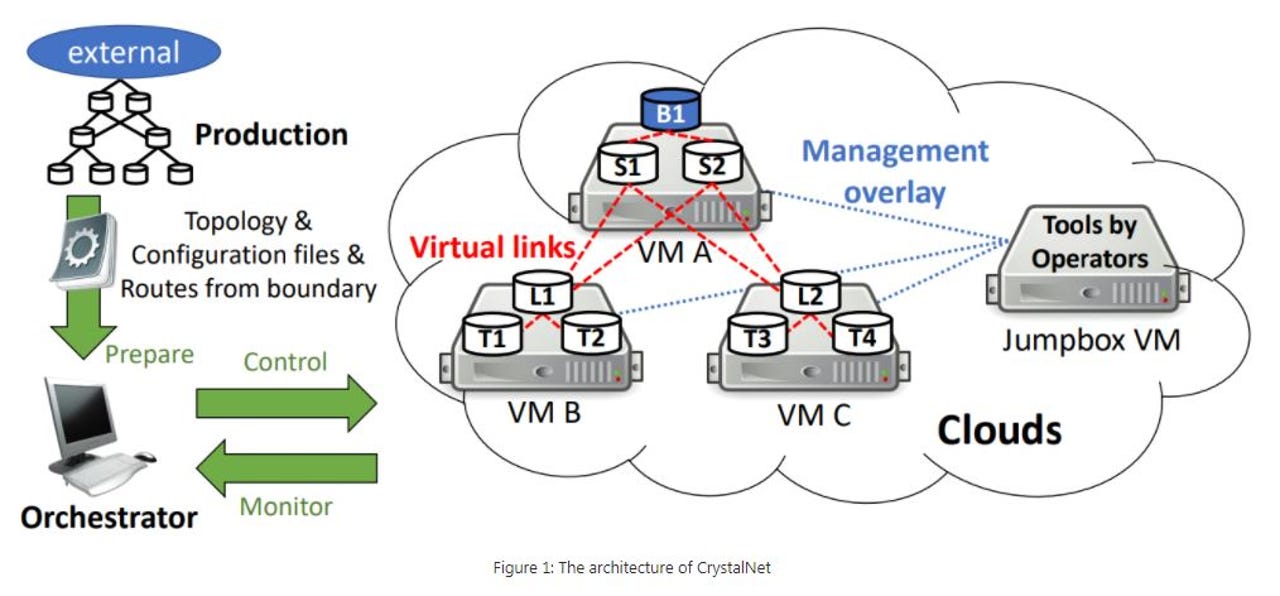Microsoft's 'CrystalNet' Azure-network emulator may be available to customers one day

Microsoft has developed a "cloud-scale emulator" meant to help engineers eliminate cloud networking downtime.

Microsoft's emulator, which it has dubbed CrystalNet, was one of the company's discussion topics at the ACM Annual Symposium on Operating Systems Principles (SOSP) 2017 in Shanghai China, which kicked off on Oct. 28. (Note: In the event write up on Microsoft's site, CrystalNet was called MirrorNet, which perhaps was its original name. Update: Microsoft has removed the MirrorNet reference.)
According to Microsoft, CrystalNet was developed over two years by the Microsoft Azure and Microsoft Research teams.
"The idea of testing before deploying is age old, but following a two-year study by Microsoft Research looking at all documented outages across all major cloud providers, we believed that we could find most potential problems proactively if we first validated a production network on an identical copy of the network," say Microsoft officials in a write-up about the CrystalNet project.
Read also: What's new in Microsoft's Windows 10 IoT Fall Creators Update release | Windows 10 Fluent Design: Microsoft's new-look Mail, Calendar now open to all | Under the Surface at Microsoft's Future Decoded
CrystalNet uses the same network topology, hardware, software and configurations as in Microsoft's production network. CrystalNet works across emulated devices on different virtual machines, and it supports software images of networking devices from a variety of vendors. That allows Azure engineers to try out planned changes and updates before implementing them in production. The idea is to reduce the number and significance of network issues caused by software configurations and human errors.
Microsoft's Azure engineers have used CrystalNet to validate new network designs, major network architectural changes, network firmware/hardware upgrades and network configuration updates. They've also used it to develop and test network automation tools and the company's Software for Open Networking in the Cloud (SONiC) switch operating system.
Microsoft officials said some Azure customers are interested in CrystalNet because they could potentially use it to reduce downtime in their own enterprise networks. Some network device vendors are interested in the technology's potential, too, Microsoft execs said.
The company isn't saying when or how it might make this CrystalNet technology commercially available, but did note that "this genuine interest in CrystalNet is driving us to continuously work with Azure engineers to perfect the technology."